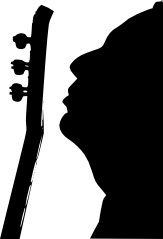 |
|
For the first CD dedicated to O'Carolan's compositions (Harmonia Mundi-MAN 4966) I have harmonised and arranged twenty pieces for classical guitar exclusively.
For the second CD (HM-MAN 5026) I have widened the orchestration of nineteen new pieces by the Irish Bard to recorders, to the mandolin, the fiddle, the sistrum, the mandola and percussions. That is why it seemed essential to me to record in addition to O'Carolan themes, two traditional dances that cannot be ignored: the Reel, a dance from distant nordic origins, and the most Irish dance: The Jig.
The third CD, "Solace" (HM-MAN 5077), is a tribute to the Irish musician. All the compositions recorded here are, indeed, original creations. They respect the spirit of the bard's compositions and more generally the soul of Celtic music.
For the forth CD, "Irish music for today's world" (L'autre distribution MLB72CAR 2016). I have harmonised and arranged for one or two guitars 22 new pieces composed by O'Carolan. .
For the first, second and forth recordings, I have drawn from what seemed to me a most serious and well documented source: the two volumes of Donal O'Sullivan entitled "Carolan, The Life Times and Music of an Irish Harper" in which are gathered all Carolan's themes together with the historic of each piece.

Turlough O'Carolan created his own style between the harpers' and the Italian baroque composers' tradition. He used to say how charmed he was by Antonio Vivaldi and how delighted he was by Arcangelo Corelli. We know how much he admired the violonist and composer Francesco Geminiani he met in Dublin at the end of his life. It would seem that during this meeting he composed his famous "Carolan's concerto" (MAN 4966).
It explains why in many compositions we find sequences, imitations or a jig in coda in the style of the Italian masters but close to the traditional Gaelic style, Carolan's initial training to which he pays tribute with his last creation "Farewell to Music" .
In accordance with the Irish traditional music, those pieces come down in the form of simple melodic lines devoided of any indication as to the harmonisation or handling of the bass and we do not have any reliable record on how the composer or his fellow harpers handled those pieces at the time.
I have therefore taken the freedom to enlight one or the other side by the harmonisation and the choice of instrumentation, by choosing a sonority between traditional music and baroque music, between Ireland and Italy.
For a century, a movement of writers, musicians and intellectuals have worked successfully together to give back to the Gaelic culture and language its place in Ireland. The Celtic music has now found its strength and radiance in Irish hearts but also in the entire world.
Pascal Bournet